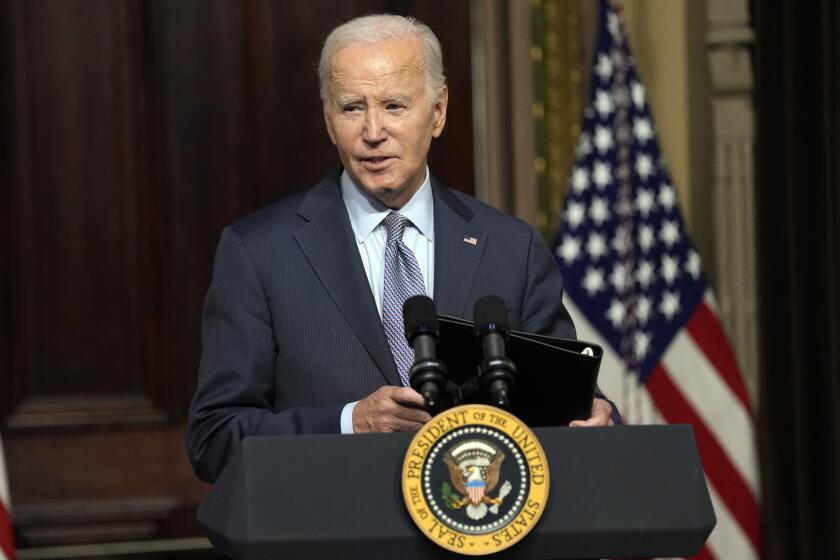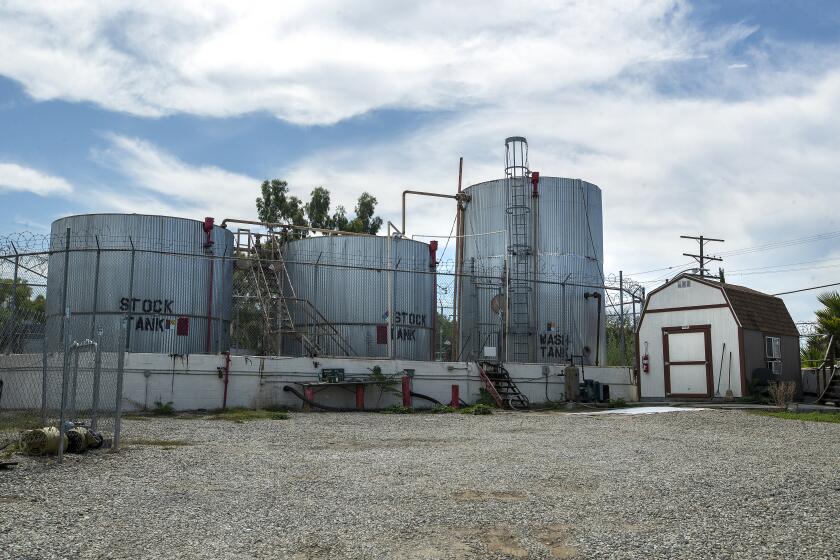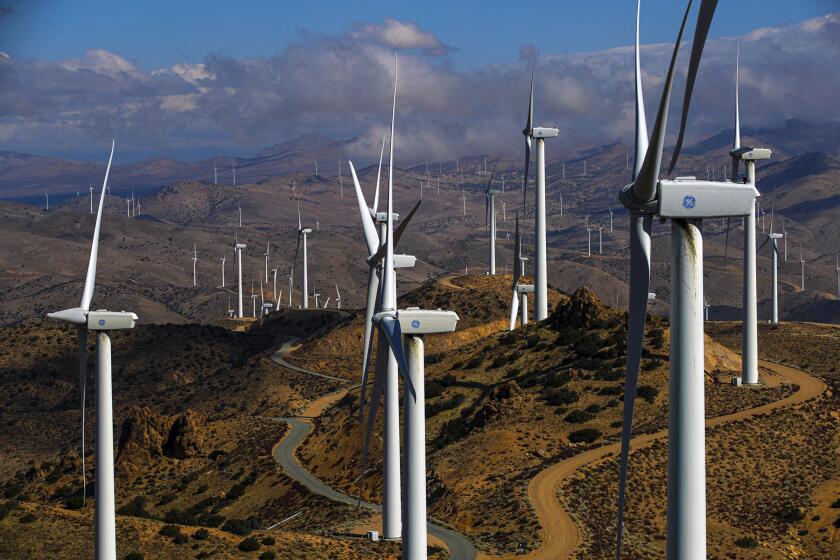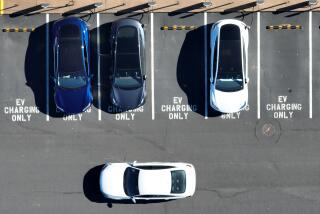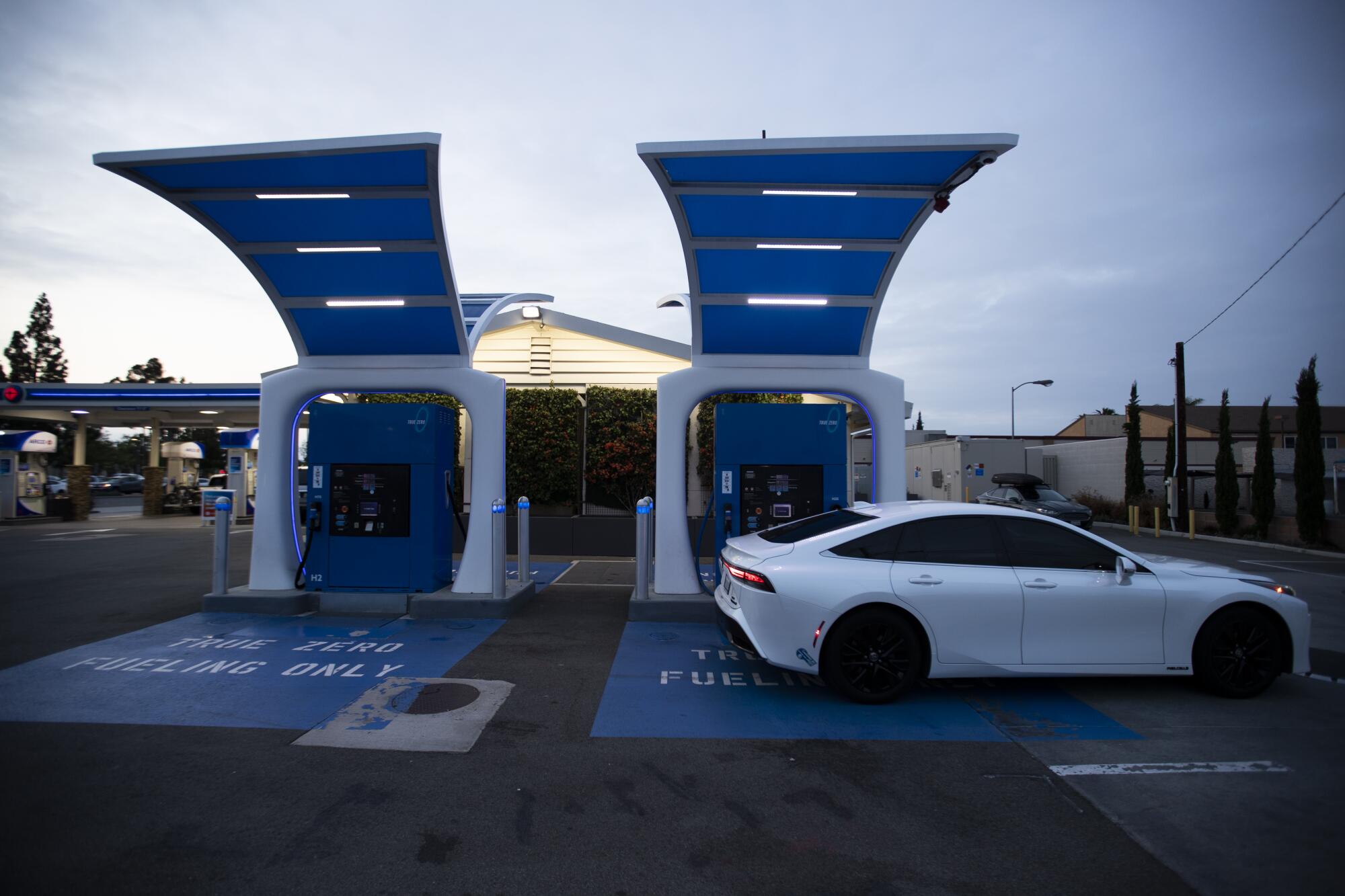
In a highly anticipated announcement, President Biden on Friday named California as one of seven recipients of a $7-billion federal hydrogen hub grant program geared toward accelerating the nation’s clean energy efforts and ambitious climate targets.
The Golden State will receive up to $1.2 billion to build or expand on hydrogen projects that will help power public transportation, port operations and heavy-duty transport — sectors known to be major contributors to greenhouse gas emissions and air pollution in the state.
“Today we are moving from concept to reality — advancing clean, renewable hydrogen in California which is essential to meeting our climate goals,” Gov. Gavin Newsom said in a statement. “California’s Hydrogen Hub will cut pollution, power our clean energy economy and create hundreds of thousands of good paying jobs.”
California was among more than 30 applicants in the competitive initiative, called the U.S. Regional Clean Hydrogen Hubs program, which stems from Biden’s 2021 bipartisan infrastructure bill and is administered by the U.S. Department of Energy.
The Biden administration has selected clean-energy projects from Pennsylvania to California to kick-start development and production of hydrogen fuel.
Other awardees include regional hydrogen hubs along the Gulf Coast and in the Pacific Northwest, the Midwest, the Mid-Atlantic region, Appalachia and the heartland states of Minnesota, North Dakota and South Dakota. The hubs collectively span 16 states across the country.
Together, they are expected to produce 3 million metric tons of hydrogen annually and reduce 25 million metric tons of carbon dioxide emissions — an amount roughly equivalent to that of 5.5 million gas-powered cars, according to the DOE.
Hydrogen can be produced from a variety of sources including natural gas, nuclear power, biomass and renewable sources such as wind and solar. When it is burned in a fuel cell, the byproduct is water or water vapor, not carbon dioxide. California’s hub will produce hydrogen exclusively from renewable energy and biomass, while other hubs will experiment with other sources.
Though officials in California, Los Angeles and Washington, D.C., hailed the program as a pivotal moment in the nation’s move toward carbon neutrality, critics expressed concern about hydrogen’s potential as a source of clean energy.
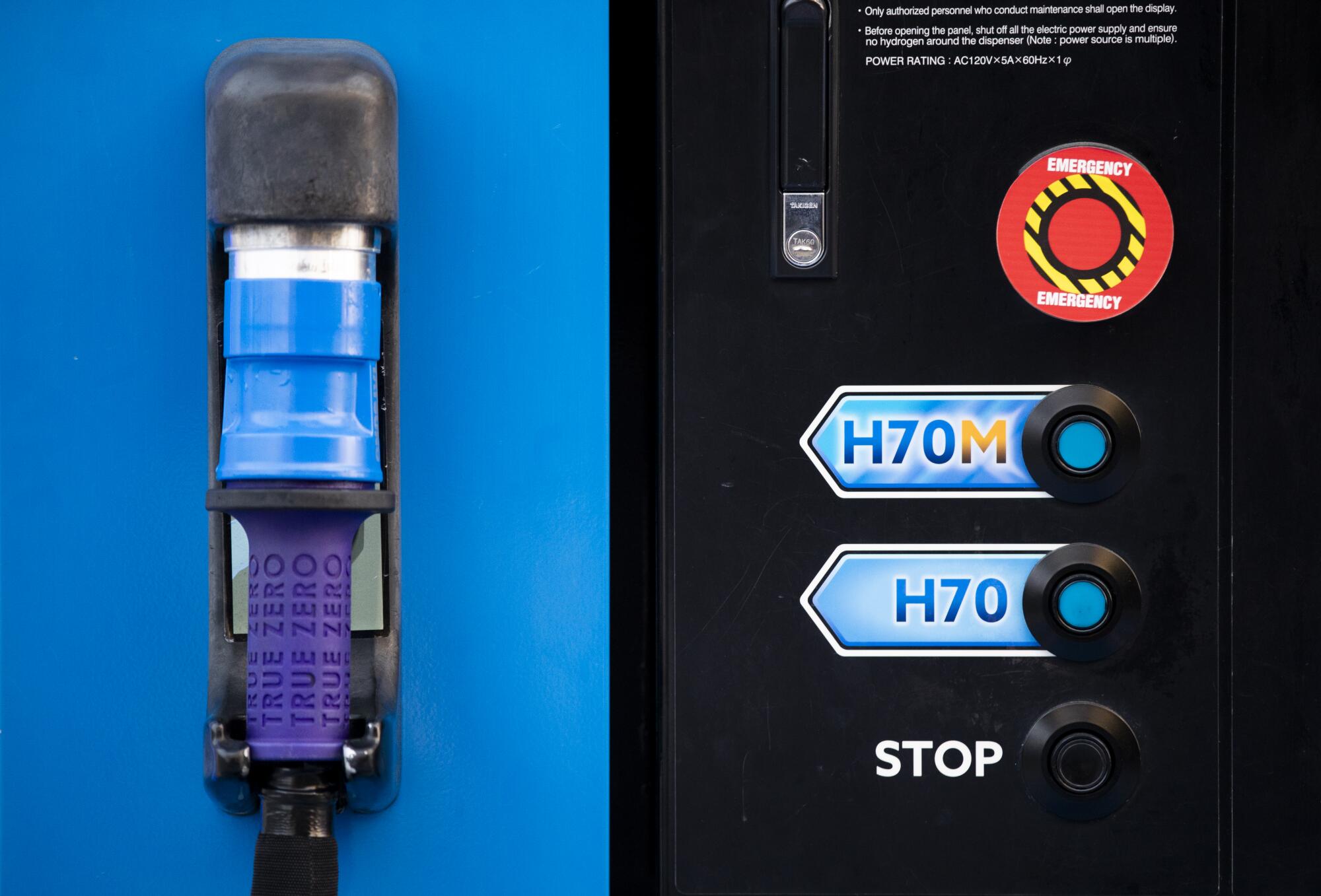
The process of making hydrogen is energy intensive, and skeptics say it could ultimately emit more planet-warming carbon.
“Hydrogen development is energy intensive to produce, could present a public safety risk in transit, can produce health-damaging air pollution when combusted, and is a play by the fossil fuel industry to extend its viability and profits,” read a statement from Marion Gee, co-executive director at the Climate Justice Alliance, a coalition representing rural and urban community-based environmental justice organizations.
Chirag Bhakta, director of Food & Water Watch California, noted that hydrogen is water intensive — consuming at least 5,000 liters of water for each megawatt hour — which could pose dangers to California and other states dealing with water supply challenges.
“California’s water supply is already at risk, a fact being compounded by our current cycles of drought and flooding, and instead of investing in sustainable climate change solutions, our leaders are buying into the false promise of hydrogen,” Bhakta said.
Others urged the state to prioritize direct electrification over expensive hydrogen solutions. For example, using clean energy to power a plug-in electric car is more efficient than using that energy to produce hydrogen, said Woody Hastings, program manager of the Phase Out Polluting Fuels Program at the Climate Center, a think tank in California.
The governor passed bills requiring corporations doing business in California to disclose their greenhouse gas emissions, and oil and gas companies to pay more to cover costs of plugging old wells.
That didn’t stop officials in Los Angeles from gathering to celebrate the news on Friday, including Mayor Karen Bass, who said the hydrogen hub program “brings us one step closer in advancing our clean air goals.”
In fact, a major component of California’s hydrogen hub will be centered on Los Angeles, where officials will be focused on decarbonizing power plants, ports and trucks, according to Nancy Sutley, deputy mayor for energy and sustainability.
Among the city’s projects are the modernization of the Los Angeles Department of Water and Power’s Scattergood Generation Station — one of the oldest in its system — which will be updated to hydrogen-capable turbines.
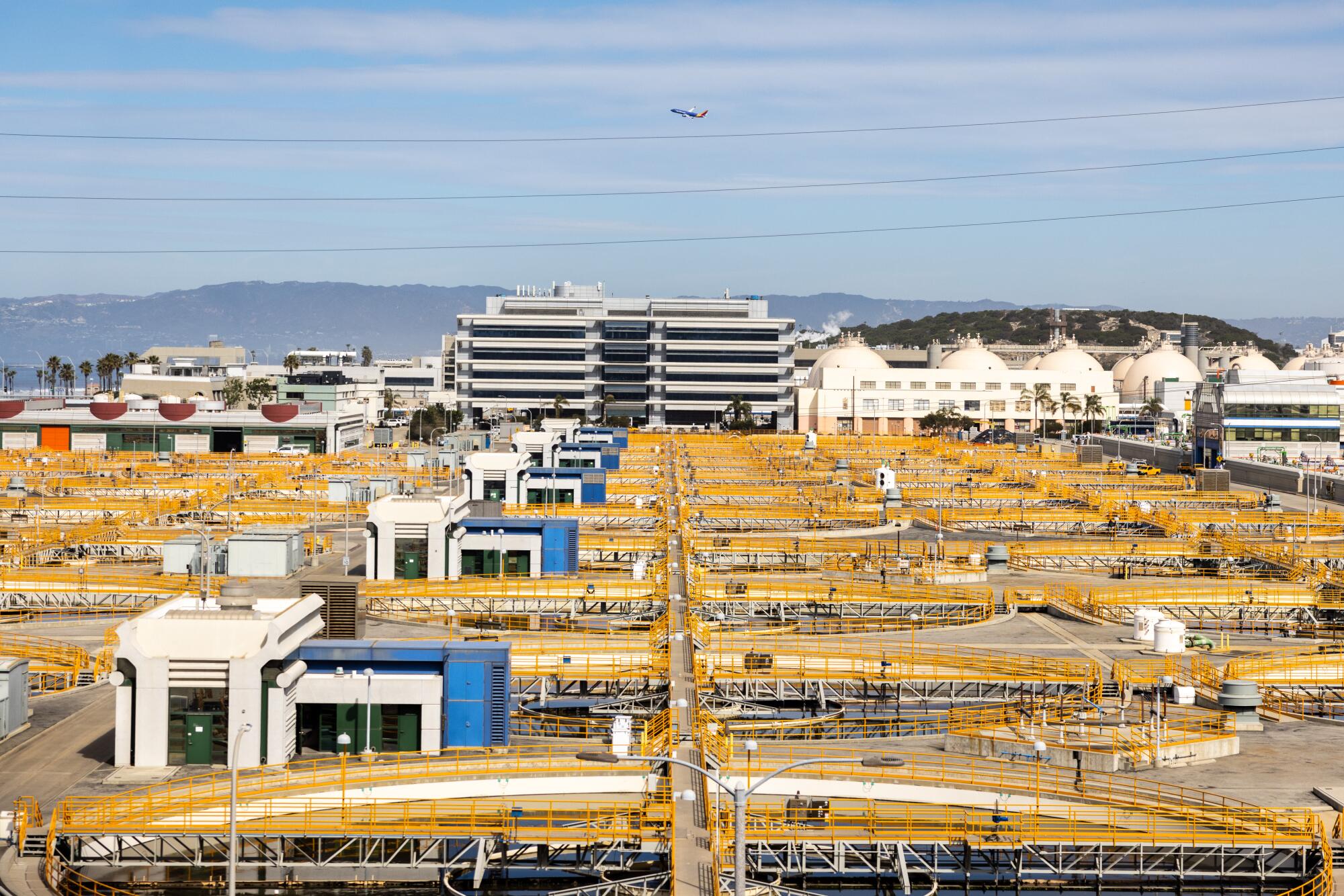
Just 15 years ago, Los Angeles was about 50% dependent on coal power; next year, it will have zero coal in its portfolio, said Aram Benyamin, DWP’s chief operating officer. That progress marks a reduction of more than 6 million tons of emissions that will be further advanced through the hydrogen hub, he said.
Los Angeles area ports will also use the hydrogen hub to help electrify equipment and reduce smog and carbon pollution from cargo handling equipment, and in later phases, trucks and ships, according to Port of Los Angeles Executive Director Gene Seroka.
The ports of Los Angeles and Long Beach first announced their ambition to be the first in the world to have zero-emissions cargo handling equipment and trucks six years ago, Seroka said, noting that “today’s announcement is truly that major step toward the zero-emission goal, and toward decarbonizing the entire maritime supply chain.”
The California Air Resources Board has released its long-awaited scoping plan, a roadmap for the state to drastically cut its carbon emissions.
The city’s hydrogen-fueled goals dovetail with Newsom’s own climate ambitions for California, including mandates to achieve carbon neutrality no later than 2045, to deliver 90% clean electricity by 2035 and to ban all new gas car sales by 2035.
Federally, Biden has directed the nation to reach net-zero emissions by 2050. During a news briefing on Friday, Biden said the hydrogen hubs will help get there.
“If we don’t do this — if we don’t stay below these numbers — the whole world changes,” the president said. “Clean hydrogen is going to help us meet this goal.”
Biden said wind and solar power are already helping to charge cars and power homes, but that when it comes to heavy manufacturing and transportation, more power is needed than what wind and solar can readily provide.
“That’s where hydrogen comes in,” he said. “Hydrogen can power industries like the production of steel and aluminum. It’s going to end up changing our transportation system like trucks, rails and planes. ... It lets us get to the place without putting more carbon in the atmosphere.”
California’s application for the federal hydrogen program was submitted in April through the Alliance for Renewable Clean Hydrogen Energy Systems, or ARCHES, a statewide public-private partnership focused on clean hydrogen.
ARCHES board member Dee De Myers, who is also a senior advisor to Newsom, said Friday’s award is a “testament to California’s unrivaled commitment to a carbon-neutral future.”
“There is no better place to showcase the benefits of clean, renewable hydrogen — and the role it can play in decarbonizing our economy while creating green jobs and sustainable business at scale,” Myers said.
Toward a more sustainable California
Get Boiling Point, our newsletter exploring climate change, energy and the environment, and become part of the conversation — and the solution.
You may occasionally receive promotional content from the Los Angeles Times.
